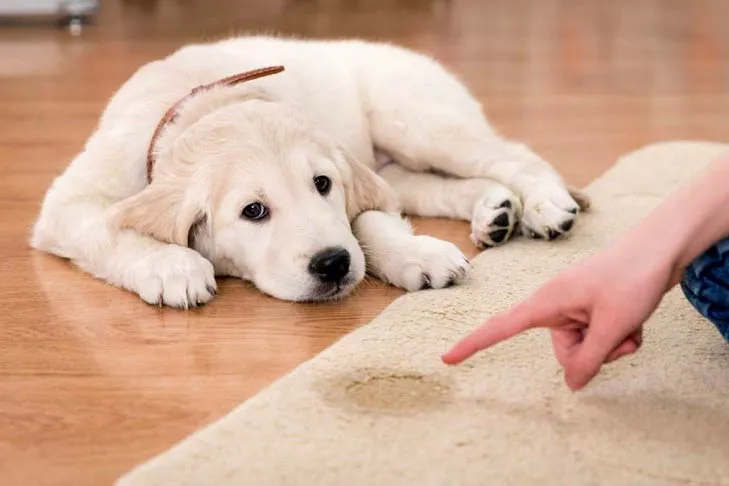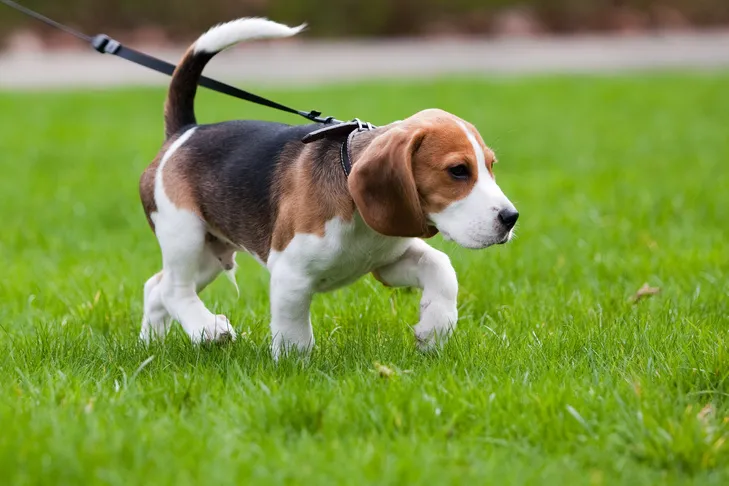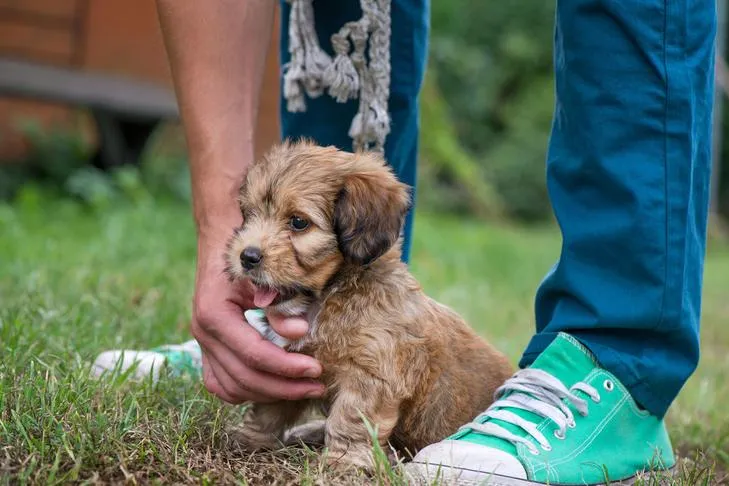Potty training a puppy is a foundational aspect of responsible dog ownership, setting the stage for a harmonious and enjoyable life together. Embarking on this journey requires preparation, research, and a well-thought-out plan even before your new furry family member crosses your threshold. Understanding the best approach for your specific situation and developing a consistent strategy are paramount to success. This guide delves into the most effective Tricks To Potty Training A Puppy, ensuring a clean home and a well-behaved companion.
Potty training your puppy is more than just preventing accidents; it’s about building a crucial foundation for good behavior, establishing a predictable routine, and maintaining a clean and fresh living environment. It’s a cornerstone of your relationship, paving the way for a positive and trusting bond right from the start. Among the many skills a new puppy needs to learn, from recognizing their name to socialization and basic obedience, housetraining deserves a prime spot on your priority list.
Successfully teaching your puppy where to do their business can significantly influence their overall development and your shared living experience. For those looking to expedite this process or tackle specific challenges, exploring various techniques and understanding the underlying principles can make all the difference.
Proven Potty Training Methods for Puppies
Expert canine behaviorists advocate for several tried-and-true methods for training your puppy. While each approach has its unique advantages and potential drawbacks, consistent application of fundamental principles can lead to success. The key is to adapt these methods to your puppy’s individual needs and your lifestyle.
Leveraging Dog Crates as a Potty Training Tool
Crates are invaluable tools that simplify many aspects of dog ownership, from vet visits and travel to providing a secure den for your dog. Dogs are naturally inclined to seek out a safe, enclosed space for comfort and security, making a crate an intuitive addition to their environment. Teach my dog to roll over is a fun trick, but mastering potty training is a necessity.
The effectiveness of a crate in housetraining stems from a dog’s innate desire for cleanliness. They inherently dislike soiling their immediate living space. Therefore, the crate must be appropriately sized – just large enough for the puppy to stand, turn around, and lie down comfortably. An oversized crate can inadvertently encourage them to use a corner for elimination, negating the purpose of housetraining. Many crates offer adjustable partitions, allowing you to adapt the space as your puppy grows.
When a puppy feels the urge to eliminate, they will typically signal this by whining or scratching. This is their way of communicating their need to go outside their den. If a puppy is allowed to have an accident inside their crate, they may come to associate their sleeping area with elimination, which can unfortunately transfer to other areas of your home.
 Golden Retriever puppy looking out of a crate
Golden Retriever puppy looking out of a crate
The Role of Puppy Pads and Paper Training
While some owners opt for puppy pads and paper training, Dr. Burch suggests these methods can sometimes be complex. “You’re reinforcing two different options for the puppy,” she explains. Ideally, puppies would learn to hold it indoors and only eliminate in designated outdoor spots. However, circumstances may necessitate these indoor solutions, such as for owners with demanding work schedules or for very small dogs in climates with harsh winters.
Puppy pads provide an approved indoor spot for your puppy to relieve themselves. Specialized indoor dog potties are also available, catering even to male dogs. Once the puppy matures and your schedule allows, you can gradually transition them to eliminating exclusively outdoors. This transition requires patience and consistent redirection. For owners curious about teaching their puppies other skills alongside potty training, understanding tricks to teach a 4-month-old puppy can be a fun way to bond.
Establishing a Consistent Housetraining Schedule
A consistent housetraining schedule is paramount for success. Puppies possess small bladders and digestive systems that are still developing, meaning they need frequent opportunities to relieve themselves. A general guideline is that a puppy can hold their bladder for approximately one hour for each month of age, up to about nine to twelve months old. For instance, a six-month-old puppy might reasonably be expected to hold it for around six hours. However, it’s crucial to remember that every puppy is an individual, and these timelines can vary.
Observe your puppy’s daily habits and cues closely when creating a schedule. Very young puppies will require frequent trips outside:
- First thing in the morning and last thing at night.
- After periods of indoor play.
- Upon waking up from naps or after time spent in their crate.
- After chewing on a favorite toy, eating, or drinking.
This might mean taking your puppy out a dozen or more times within a 24-hour period. If you work outside the home, consider making arrangements for a dog walker or a trusted friend to help maintain this schedule. The sooner your puppy understands the designated potty spot and which areas are off-limits, the quicker you can move past this initial challenging phase.
 Beagle puppy on a leash being walked in the grass
Beagle puppy on a leash being walked in the grass
Observing and Supervising Your Dog
Diligent observation of your puppy is key to understanding their unique signals and rhythms. Some puppies can hold their bladders for longer durations than others, while some may need to go out every time they play or become excited. Others might pause mid-play session to eliminate and then continue as if nothing happened. Just like human babies, a puppy’s potty habits are highly individual.
Managing Your Dog’s Diet for Better Training
Puppies have immature digestive systems, making it advisable to divide their food into three smaller meals throughout the day. Feeding a high-quality puppy food is also essential, and it’s crucial to monitor how your puppy reacts to their chosen diet.
Examining your puppy’s stool is a direct indicator of their digestive health. If you consistently notice bulky, loose, or foul-smelling stools, it may be time to consult your veterinarian. They might suggest switching to a different dog food. Overfeeding can also lead to diarrhea, which will undoubtedly complicate your potty training efforts.
 Cavalier King Charles Spaniel next to its food bowl
Cavalier King Charles Spaniel next to its food bowl
Reinforcing Success: Praising Your Puppy for ‘Going’ Outside
Scolding a puppy for an accident indoors, especially after the fact, is largely ineffective. Positive reinforcement, on the other hand, is incredibly powerful. Make your puppy feel like a brilliant achiever every time they successfully eliminate in the designated outdoor spot.
Be generous with your praise! Offer enthusiastic cheers, applause, and high-value treats. Let your puppy know that this simple, natural act is immensely important. Rewarding them with small, easily digestible treats will further solidify the positive association.
If your dog has an accident, resist the urge to scold. Simply clean up the mess thoroughly. It’s vital to use an enzymatic cleaner that effectively eliminates odors, preventing your puppy from being drawn back to the same spot. For carpets, blot up any liquid before applying the cleaner.
If you witness your puppy starting to squat or posture to eliminate, immediately pick them up and take them outside. If they complete the act outdoors, shower them with praise and attention. Remember, housetraining success hinges on prevention and consistent positive reinforcement. Learning fun things to teach your dog can complement this positive training environment.
 Puppy being trained in the grass
Puppy being trained in the grass
Troubleshooting Common Housetraining Challenges
Adhering to these guidelines typically results in a well-house-trained puppy. However, challenges can arise.
Dr. Burch points out that persistent house soiling can sometimes indicate an underlying physical issue. “Well before the several-month mark, a dog who has seemed impossible to housetrain should have a good veterinary workup,” she advises. If your veterinarian confirms your dog is healthy, the next step is to seek guidance from a qualified trainer or behaviorist with experience in addressing such issues. It’s important to understand that it can be hard to teach an old dog new tricks, and puppies also present unique learning curves.
‘My Dog Is Piddling All Over the House!’
This is a common complaint among owners of toy breeds. Some trainers advocate for teaching these puppies to use indoor potty spots, similar to a cat’s litter box. In addition to potty pads, specialized dog potty boxes are available for indoor use. Trainers emphasize that with consistent effort, even small dogs can be successfully house-trained, though it may require extra time and attention.
‘My Dog Keeps Peeing in the Same Spot Where They Had an Accident’
This usually stems from incomplete cleaning. Lingering odors can signal to your dog that this is an acceptable place to eliminate. Ensure your puppy supply kit includes plenty of enzymatic pet stain cleaners and follow their usage instructions meticulously.
 Yellow Labrador retriever puppy sitting on carpet next to a pee accident
Yellow Labrador retriever puppy sitting on carpet next to a pee accident
‘I Gave Them the Run of the Apartment. When I Came Home, There Was a Mess.’
This is a frequent mistake. Owners might see early signs of progress and prematurely relax their vigilance. Even when your puppy is consistently performing as desired, maintain the established schedule to ensure good habits become deeply ingrained.
‘They’re Soiling Their Crate!’
Dr. Burch notes that rescue dogs, especially those who experienced prolonged confinement without access to an appropriate elimination area, may soil their crates. The most effective approach is to revert to the basics of crate and house training. Follow these steps:
- Assess your dog’s ability to control their bladder and bowels when outside the crate.
- Carefully manage their diet and stick to a strict schedule.
- Provide frequent trips outside, including after every meal, first thing in the morning, and last thing at night.
- If you are away from home for extended periods, consider hiring a dog walker or enlisting a trusted neighbor or friend to let your dog out.
- Thoroughly clean any accidents within the crate to eliminate all traces of odor.
How Long Does Puppy Potty Training Take?
The duration of potty training can vary significantly. Factors such as the puppy’s age, prior learning experiences, your training methods, and most importantly, your consistency, all play a role. An eight-week-old puppy is developmentally very different from a five-month-old. Some puppies master housetraining within days, while others may take months, particularly if they come from less-than-ideal prior situations. With ample patience and persistent effort, most dogs can successfully learn.
